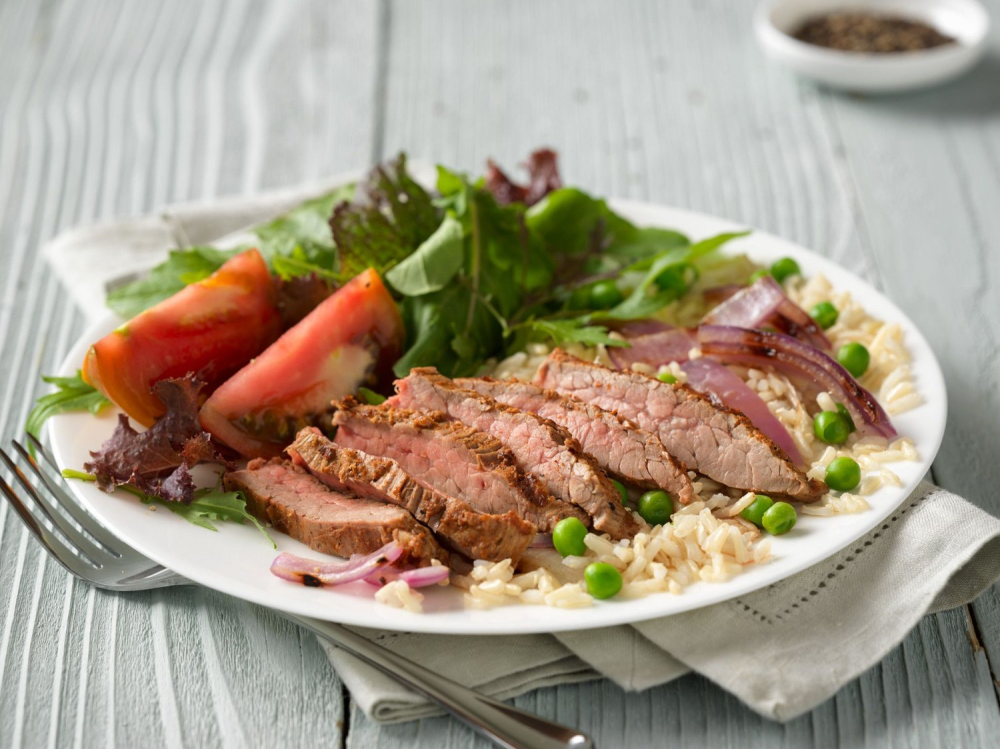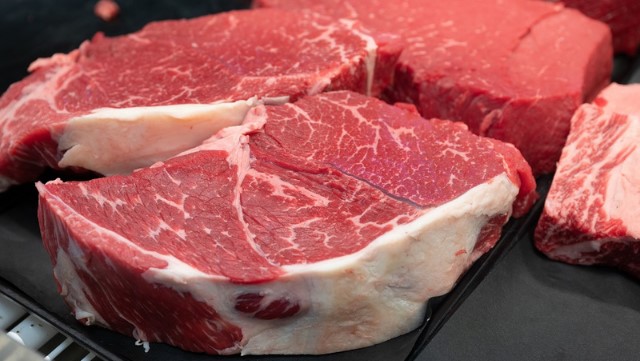What Do Iowa's Consumers Want To Know?
February 9, 2022
By Lydia Zerby
In a recent Fresh Pickings eNewsletter edition, we asked readers to “let us know one thing you would like to learn more about related to Iowa agriculture.” At Iowa FFP, we encourage two-way dialog and seek to share content that is relevant to what readers are currently interested in receiving. Throughout the coming months, we will share answers to actual questions submitted by our readers. Click here to submit your question, and we might answer it in a future edition!
Please note, by clicking the links below, you’ll be leaving a partially funded checkoff site.

Question: What are some uses for corn other than feed and ethanol?
Answer: Most of Iowa’s corn goes into animal feed and ethanol production, but it’s also used to make starches, sweeteners and almost 4,000 everyday products – like lipstick, paper, plastic water bottles, tires, crayons, shampoo, toothpaste, chewing gum and beer. That doesn’t include all the meat, dairy and poultry products that depend on corn for livestock feed. Read more about uses for Iowa–grown corn.
Question: Can you tell me more about specific cuts of beef? What they’re called, what they’re best used for and how to incorporate beef into a healthy diet?
Answer: Whether you’re looking for a primal cut of beef for grilling or smoking, a lean cut for the perfect balance of taste and nutrition, or ways to use beef in burgers or sauces, beef is a versatile and flavorful protein.
Primal Cuts – click for complete list
- Chuck – This large primal comes from the shoulder area and yields cuts known for their rich, beefy flavor. Features roasts ideal for slow-cooking as well as more tender, grill-ready cuts such as the Flat Iron Steak.
- Rib – Situated under the front section of the backbone and used primarily for support. Popular cuts from the Rib include the rich, flavorful Ribeye Steak and the Prime Rib Roast.
- Loin – The area below the backbone is home to some of the most tender and popular cuts of beef, such as the Tenderloin, Strip Steak, T-Bone and Porterhouse Steaks. Loin cuts are great prepared on the grill or under a broiler.
- Flank – Located below the Loin and home to the Flank Steak. Cuts from this area are lean, very flavorful, and best when braised or marinated and grilled.
- Brisket – This is the animal’s breast, so it can be tougher because it is used for movement. It’s an ideal cut for cooking low and slow – on the barbecue or in a slow-cooker to achieve tenderness.

Ingredient Cuts – click for complete list
- Ground Beef – Versatility and rich flavor make it ideal for burgers, tacos or wraps. Perfect for breakfast, lunch and everything in-between.
- Stew Meat – A full-flavored staple. Great for slow-cooking, chili and stews.
- Cubed Steak – Pre-tenderized, this thin cut is a great value for everyday meals. Skillet cook for best results.
- Kabobs – This popular grilling cut is extremely versatile and flavorful. Skewer alongside vegetables for grilling or use in a stew.
Heart-Healthy Beef
February is American Heart Month and is observed to raise awareness of the importance of a healthy heart and encourage healthy habits that help reduce the risk of heart disease.
Enjoying lean beef in a heart-healthy lifestyle is easier than you think with these recipes featuring lean beef, fresh fruit and vegetables, and whole grains. These Beef. It’s What’s For Dinner. recipes are all certified by the American Heart Association®.
More than 36 cuts of beef meet government guidelines for lean. A tip for finding lean beef cuts is to look for the terms “round” or “loin” (e.g.: Sirloin, Tenderloin or Eye of Round).

Question: How are soybeans grown by Iowa farmers used?
Answer: Iowa farmers produced 494 million bushels of soybeans in 2020. That production is valued at more than $5.4 billion. Products made from soybeans touch everyday life in countless ways, though often behind the scenes.
 Animal Nutrition - Animal agriculture produces high-quality protein in the form of dairy, meat, poultry, fish and eggs. But much of that protein started as soy. In fact, global animal agriculture is the No. 1 customer for U.S. soybeans. Animals like chickens, pigs, turkeys, cattle and fish rely on nutrient-dense soybean meal to thrive. They need high levels of quality protein and digestible energy to grow, all found in soybean meal.
Animal Nutrition - Animal agriculture produces high-quality protein in the form of dairy, meat, poultry, fish and eggs. But much of that protein started as soy. In fact, global animal agriculture is the No. 1 customer for U.S. soybeans. Animals like chickens, pigs, turkeys, cattle and fish rely on nutrient-dense soybean meal to thrive. They need high levels of quality protein and digestible energy to grow, all found in soybean meal.
- According to a study funded by the soy checkoff, the soybean meal fed in the U.S. goes to several segments of animal agriculture.
- Poultry eats about 64%.
- Pigs consume nearly 24%.
- Beef and dairy cattle use just over 10%
- The rest goes to aquatic farming like fish and shrimp, other farm animals and companion animals like horses and pigs.
- Human Nutrition - Of course, people need high-quality protein, too. Soybeans deliver a plant protein option in many forms.
- Tofu, a nutritious plant protein option, may be the most well-known form of soy.
- Tempeh, made from fermented soybeans, carries similar nutritional benefits to tofu with the added benefits from fermentation. Miso is also a familiar fermented product. Fermentation is good for gut health.
- The popular appetizer edamame is soybeans picked while still green or from a specific edamame seed.
- Soymilk, most brands fortify their soymilk with vitamins and minerals such as vitamin D and calcium. Soymilk is also available as a shelf-stable product.
- Ever cook with vegetable oil? Soybean oil remains the most common vegetable oil in the U.S. and is often labeled and sold as just that – vegetable oil. In fact, 54.3% of the soybean oil used in the U.S. goes to the food industry.
- Soy lecithin can stabilize blends of ingredients. Soy lecithin also adds to your daily intake of the essential nutrient choline.
- Industrial Uses - A renewable resource, soybean uses range far beyond food and feed. Soybean oil and meal can replace petroleum and other volatile ingredients in many industrial and consumer products. The primary example is biodiesel, a cleaner-burning, renewable alternative to petroleum diesel. Iowa leads the nation in production at 345 million gallons of the renewable fuel in 2019.
Uses for soy-based products continue to expand. The soy checkoff’s Soy Products Guide contains more than 1,000 items currently on the market – from flooring and roofing products to candles and personal care items.
Question: How many Century Farms are in Iowa?
Answer: As of 2021, there are 20,537 Century Farms in Iowa. The Century Farms Program recognizes and honors those individuals who have owned the farmland for 100 years or more. The program began in 1976 as part of the Bicentennial Celebration, when nearly 5,000 certificates and farm markers were distributed across Iowa at local ceremonies.
The program is sponsored by the Iowa Department of Agriculture and the Iowa Farm Bureau Federation, with the endorsement of the Iowa American Revolution Bicentennial Commission.
